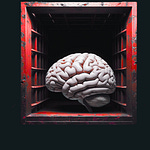When you say ‘AI-powered,’ what exactly is the AI powering?
The core of your product… or your pitch deck?
Last year, we watched two Nobel Prizes awarded because of AI's transformative role in research and machine learning. But we also saw how AI hallucination can damage the reputation of dozens of well-known brands.
Early this year, we saw how DeepSeek R1 leads the trend to cheaper and more open AI. Meanwhile, nine major news outlets, eg. The Atlantic, Vox, has filed a lawsuit against an AI startup, Cohere. This lawsuit is valued at over $5 billion, alleging copyright infringement of at least 4,000 works.
Today, I'm sharing 13 stories.
It is not about success or failure but the grey area in the middle where most of us operate. Every AI decision you make balances innovation vs. risk, efficiency vs. reliability, and future-proof against lack of competitiveness.
Each story ends with a question.
Not to test your AI knowledge but to challenge your certainty.
In a time where AI can both cure diseases and invent fake news, the real risk is not so much in the technology but in our assumptions about it.
Let’s begin. Here’s our first story.
Genuine User Problem or FOMO?
Label: StrategyI get it. Companies are in a race and worried about being left behind in the AI game. It is exactly this sense of urgency that many CEOs are forced to introduce features that deliver little value but PR crises.
Google released AI Overview on top of its search results. It is supposed to deliver answers that would save users time. Definitely not because they try to copy Perplexity’s success.
The most well-known, notorious example of how much Google failed at their new search feature was a query: cheese not sticking to pizza. Instead of offering sensible tips, the AI recommended mixing in non-toxic glue to add tackiness.
Or it stated that Barack Obama was a Muslim, perpetuating a long-debunked conspiracy theory.
Apple rushed to integrate AI features into its ecosystem under the banner of Apple Intelligence. The branding is genius, but the product didn’t live up to the expectations. The AI came up with a series of fake news such as “Luigi Mangione shoots himself” (BBC news) or Rafael Nadal, a Spanish tennis player, came out as gay.
The above fallout forced Google to shuffle its leadership team and Apple to disable the feature soon after it was released.
My question to you is,
Would you still release your AI product if it is your personal reputation on the line?
Jevons or No Jevons Paradox?
Label: StrategyWe find ourselves in 1760s- 1780s England.
Coal was valuable. But it was really expensive. Factory owners would watch every lump of black gold that went into their steam engines.
Then James Watt showed up with his new engine design. Only a quarter of the coal is needed for the same work.
Assuming the number of steam engines stayed the same, the owners only needed a quarter of the original coal to power these steam engines. So, in theory, there should be less coal demand.
On the contrary, Jevons observed that improvements in steam engine efficiency led to factory owners seeing other steam engine applications (e.g., textile mills, steel factories) finally have positive PnL, which led to increased demand for steam engines, subsequently leading to explosive coal consumption.
The efficiency gained has unleashed waves of demands that were previously waiting in the wings.
Back to 2025. DeepSeek achieved performance on par with OpenAI's o1 at 1/10th the training cost. And you started to see experts erupt with predictions of an AI explosion. "Jevons Paradox!", "Cheaper AI means more AI usage!", you also have CEOs like Satya Nadella said:
Jevons paradox strikes again! As AI gets more efficient and accessible, we will see its use skyrocket, turning it into a commodity we just can't get enough of.— Satya Nadella
Is this true?
Having a cheaper machine is only one factor that satisfies the Jevons paradox. But more importantly, would this machine allow my firm a positive PnL?
Is the compute cost really what's holding AI back? Google's AI suggests putting glue in pizza. Apple's AI invents fake news about tennis stars.
The reason that the steam engine + coal combo worked was that thousands of businesses were ready to use steam power for many more scenarios. They just needed to see the positive return on investment. But is it the same with AI?
Here’s my question to you,
Imagine airlines slashed ticket prices by 90% but couldn't guarantee which city you'd land in. Would cheaper flights matter?
Something Worth Paying For?
Listen to this episode with a 7-day free trial
Subscribe to 2nd Order Thinkers to listen to this post and get 7 days of free access to the full post archives.












